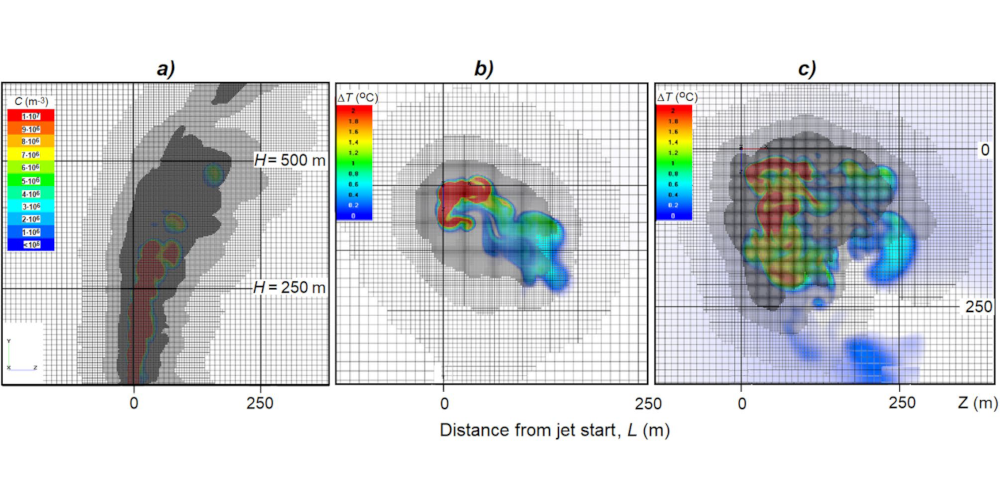This paper presents the results of the development of a mathematical model and numerical simulation of the ascent in the atmosphere of a vertically directed jet fed by the heat of condensation of watervapor on a hygroscopic aerosol introduced into the jet at the start.
The possibility of creating artificial convective clouds depending on jet parameters, condensation heat value and vertical profiles of windspeed, air temperature and humidity has been evaluated. Numerical experiments showed that the motion of a high‑speed and high‑temperature jet in the atmosphere has a complex turbulent nature. As the jet ascends, it expands, losing superheat and velocity. The temperature of the jet decreasesfaster than the velocity, so the jet rises slightly above the level at which its superheat disappears.The jet’s ascent height increases as the humidity of the air and the vertical temperature gradientincrease. Wind causes the jet to deform, bend, and decrease the height of ascent. Feed the jet withcondensation heat results in a significant increase in jet lift height. This is particularly effective in the case of introducing into the jet two‑layer NaCl/TiO2 nanoaerosol, which is capable of absorbing water vapor in an amount significantly greater than its mass. The simulation results are encouraging in the possibility of creating artificial updrafts that can lead to the formation of convective clouds and precipitation on days with favorable atmospheric conditions, when wind speed in the sub‑cloud layer is < 6 m/s, air humidity is > 65%, and the temperature lapse rate is > 7.5°C/km.
Magomet T. Abshaev1, Ali M. Abshaev1*, Andrey A. Aksenov5, Iuliia V. Fisher2, Alexander E. Shchelyaev2, Abdulla Al Mandous3, Youssef Wehbe3 & Reyad El‑Khazali4 Study of the Possibility of Stimulating Cloud Convection by Solar Radiation Energy Absorbed in an Artificial Aerosol Layer // Atmosphere 2023, 14(1), 86
Download PDF 9999KB
(1) Hail Suppression Research Center “Antigrad”, 198 Chernishevsky Street, Nalchik 360004, Russia.
(2) Engineering Company TESIS, 18 Yunnatov str., 7th floor, office 705, Moscow 127083, Russia.
(3) National Center of Meteorology, P.O. Box: 4815, Abu Dhabi, UAE.
(4) Department of Electrical Engineering and Computer Science, Khalifa University of Science and Technology, P.O. Box: 127788, Abu Dhabi, UAE.
(5) Joint Institute for High Temperatures, Russian Academy of Sciences, 13 Izhorskaya st, Moscow 125412, Russia. *email: info@hsrc-antigrad.com
This article is an open access article distributed under the terms and conditions of the Creative Commons Attribution (CC BY) license (https://creativecommons.org/licenses/by/4.0/).
